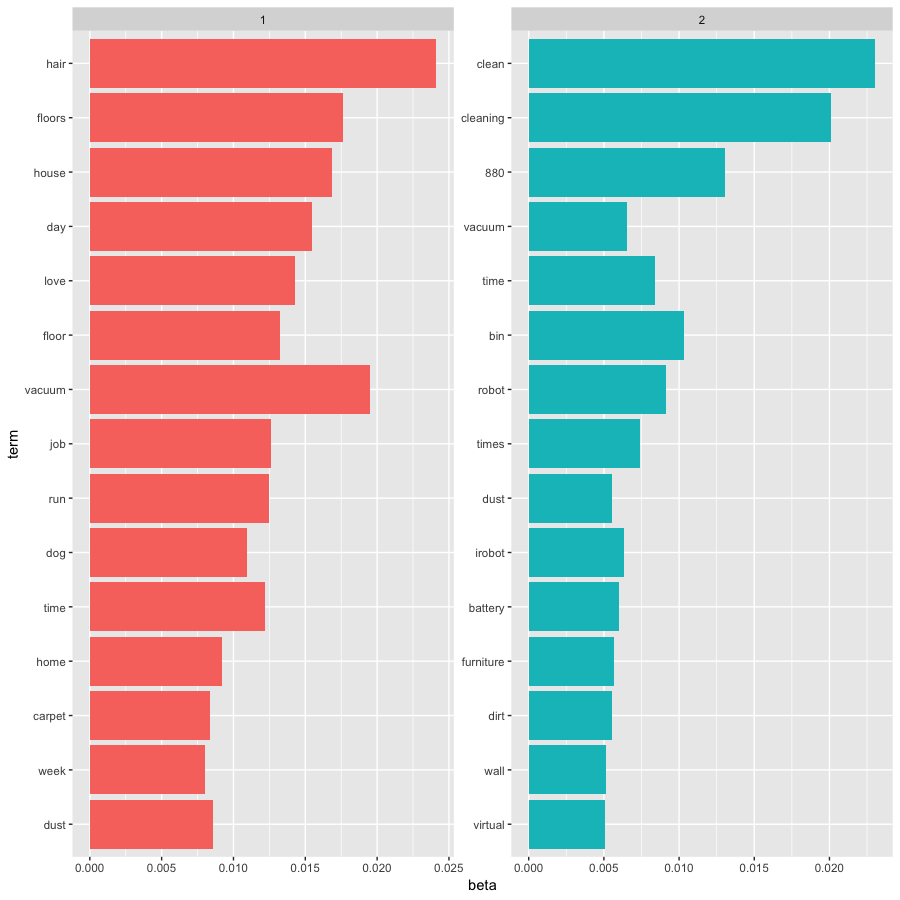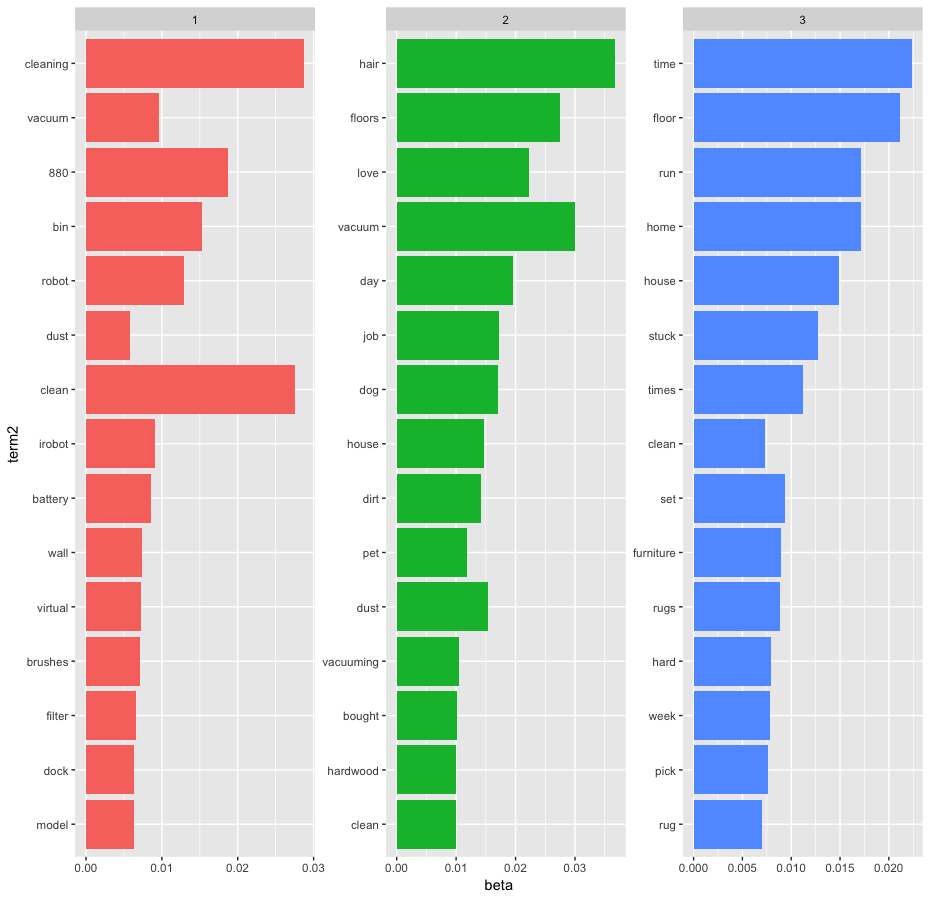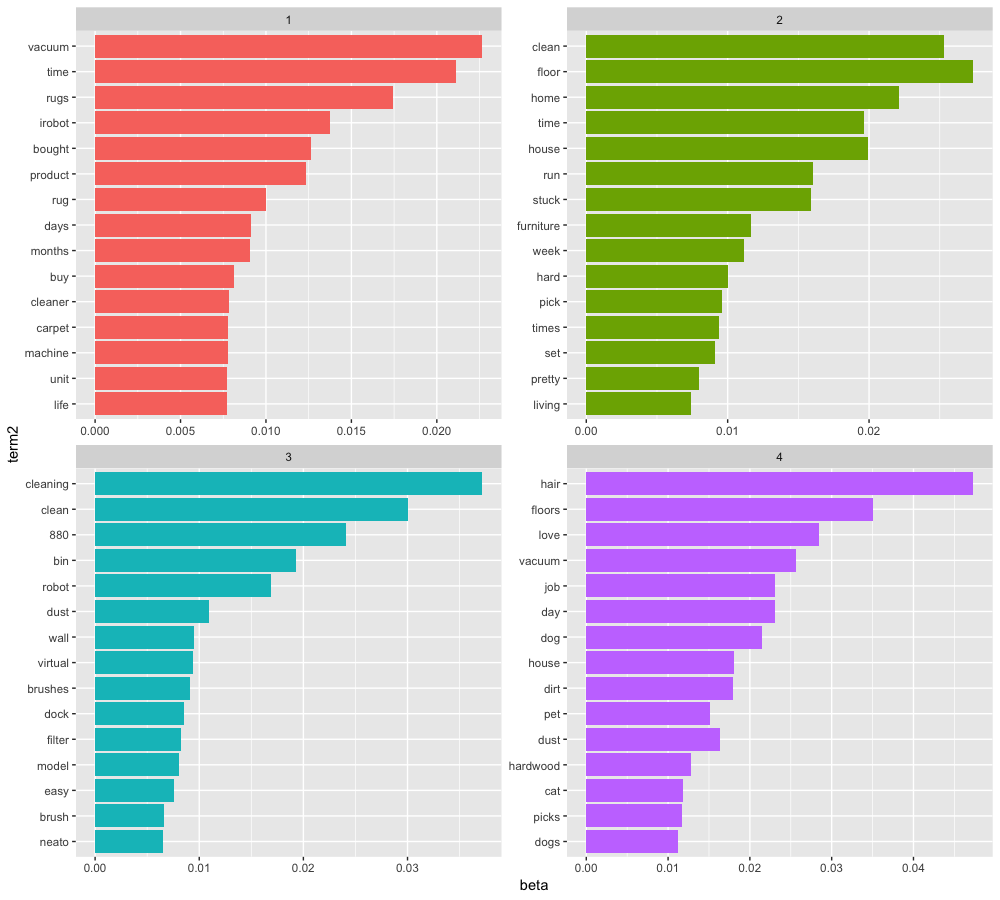Interpreting topics
Introduction to Text Analysis in R

Maham Faisal Khan
Senior Data Science Content Developer
Two topics
lda_topics <- LDA( dtm_review, k = 2, method = "Gibbs", control = list(seed = 42) ) %>% tidy(matrix = "beta")word_probs <- lda_topics %>% group_by(topic) %>% slice_max(beta, n = 15) %>% ungroup() %>% mutate(term2 = fct_reorder(term, beta))
Two topics
ggplot(
word_probs,
aes(
term2,
beta,
fill = as.factor(topic)
)
) +
geom_col(show.legend = FALSE) +
facet_wrap(~ topic, scales = "free") +
coord_flip()

Three topics
lda_topics2 <- LDA( dtm_review, k = 3, method = "Gibbs", control = list(seed = 42) ) %>% tidy(matrix = "beta")word_probs2 <- lda_topics2 %>% group_by(topic) %>% slice_max(beta, n = 15) %>% ungroup() %>% mutate(term2 = fct_reorder(term, beta))
Three topics
ggplot(
word_probs2,
aes(
term2,
beta,
fill = as.factor(topic)
)
) +
geom_col(show.legend = FALSE) +
facet_wrap(~ topic, scales = "free") +
coord_flip()

Four topics

The art of model selection
- Adding topics that are different is good
- If we start repeating topics, we've gone too far
- Name the topics based on the combination of high-probability words
Let's practice!
Introduction to Text Analysis in R

